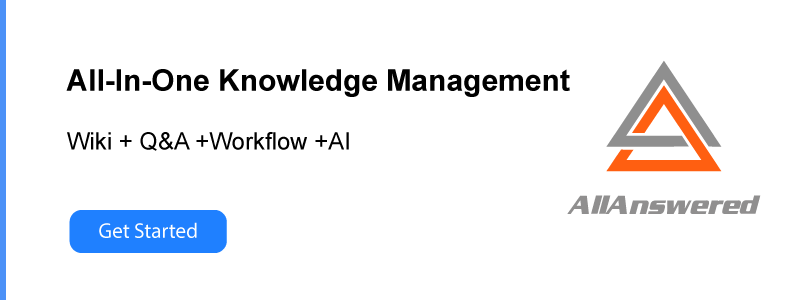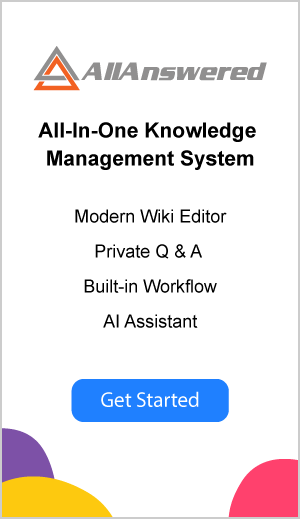5 Tips on Optimizing Training and Onboarding with Knowledge Management Software
Every organization has a wealth of knowledge that they would want to pass down from one member during training or onboarding. Whether these be best practices, operational processes, and other business information, you would need the right tools to document and store them somewhere that is easy to access.
However, knowledge management is more than just collecting, storing, and maintaining information. It also includes developing new knowledge, sharing them, and tying them into action, which organizations tend to forget.
In fact, a survey by Deloitte shows that 82% of businesses fail to implement the latter part of knowledge management. They tend to get stuck with recording business information and letting it sit in their knowledge management database instead.
With that said, here are some tips on optimizing your training and onboarding with knowledge management software.
1. Sharing is caring
A business’s best practices and processes should be shared with other members and used as a reference for new and old members. Recording and storing this information in your database would simply be a waste if you won’t even bother sharing them with the rest of your organization.
With knowledge management software, you’ll be able to promote knowledge sharing within your organization. Its different tools and functions allow for a collaborative effort in building your knowledge database, ensuring that all your training and onboarding materials are updated and effective. Likewise, it makes this information easily accessible to everyone within the company.
2. Create scalable knowledge databases
As your business grows, your knowledge database would also need to expand to accommodate the number of employees joining and leaving your organization. With each new employee, you must make sure that they are all properly onboarded and trained. The lack of knowledge sharing can result in poor performances and losing out on opportunities in the long run.
Fortunately, the rise of cloud technology makes it possible and more accessible for your internal knowledge management system to scale up alongside your business. Since you can upload and download all your materials, knowledge transfer and sharing become more convenient, faster, and seamless.
3. Make use of automation
There are different types of knowledge management systems in the market. Most of which offer automation features to help you maintain your company’s knowledge database. Some platforms take it a step further by providing smart automation, such as artificial intelligence, to automate certain knowledge management processes.
AllAnswered, for one, is powered by an AI to assist you in keeping your database up-to-date, organized, and complete. It can automatically capture know-how and best practices through typical Q&As. This way, your knowledge database can grow without much effort on your part.
4. Promote innovations
Businesses are always on the hunt for new innovations. These can be in the form of new services, solutions, products, or processes. And through knowledge management, they can identify the strengths and weaknesses of current operations and help develop better ones for the organizations’ continuous growth.
Using software can promote such innovations for your company. It helps monitor and improve knowledge management system so that your databases are optimized for your future use. Its collaborative nature allows it to absorb new ideas, integrate them within the current system, and enhance current best practices and processes. Through this, your training and onboarding systems can develop over time and adapt to your business’ needs no matter what may come.
5. Integrate with your everyday tools
It is common for businesses to use several solutions for their training and onboarding needs. From learning management systems to human resource software, your company probably has one or two of those within your current system. To keep everything streamlined, you should consider integrating your knowledge management software with the rest of the tools you use for your day to day operations.
Integrations give you access to more functions and tools beyond what your software has to offer. This way, you can seamlessly move from one task to another without disrupting workflows and compromising data transfer in the process. To know which solutions would work best together, FinancesOnline provides a guide on knowledge management software that you can check out.
Knowledge is wealth
Knowledge management is an essential part of any business. It is more than just documenting and storing business information. It is also where you make the most out of this information to help maintain and improve the quality of your employees’ performances and the different business processes within your organization.
Maximize your knowledge database by utilizing knowledge management software. There are several advantages to having one in your organization. But most importantly, it helps optimize your training and onboarding so that your employees can fully benefit from the wealth of knowledge your company has.








